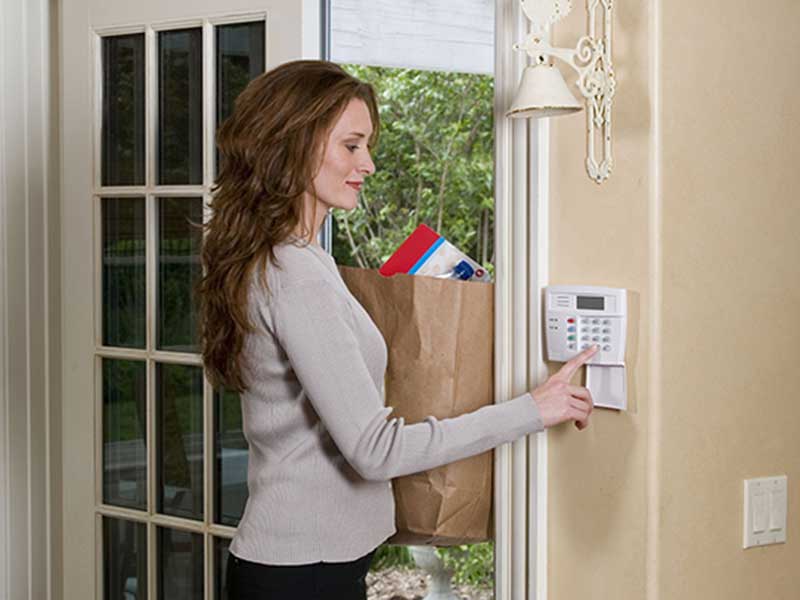5 Ways to Prevent False Alarm Monitoring Alerts
Home alarm systems are something that everyone needs, and many of us have. Motion detectors and cameras send us alerts as soon our armed system detects activity. It is even more beneficial to have home alarm monitoring watching over our home security. Some monitoring plans allow the company to verify the emergency before taking further action. Others give you the option to have the alarm go straight to first responders without verification. Although this saves time in the case of a real emergency, what if it is a false alarm? Some alarm monitoring companies charge a fee for false alarms, along with city first responders. This makes it an important issue to familiarize yourself with.
The Causes of a False Alarm Monitoring Alert
There are a variety of reasons that home security monitoring gets falsely triggered. Here is a shortlist of the most common causes for false alarms:
- User error
- Equipment error or improper installation
- Bad weather
- Active or large pets
- HVAC or ceiling fans
User error comes when you enter the code incorrectly or too late. The same goes for coming in to disarm the system, don’t delay. Equipment error comes when a device may become faulty, whether due to age or defect, or just needs new batteries. Incompatible equipment may not work well with each other causing false alerts to your alarm monitoring. Installing the security device improperly also leads to false alarms. Are contact sensors attached to loose doors and windows? Or, maybe you remodeled an area, and the sensors don’t suit the situation anymore.
Then, you have uncontrolled circumstances such as bad weather coming through. Thundering vibrations or strong winds shake the windows and door contact sensors and glass break detectors. For that matter, a loud barking dog puts out enough vibration to trigger the glass break detector also. Pets trigger the motion sensors, too, if they are over 40 pounds, usually. In addition, the vents in your home, along with fans, tend to cause plants and curtains to activate your motion sensors when place improperly.
How to Prevent Alarm Monitoring Triggers
Let’s take the previous five causes and see how to prevent them from happening when using alarm monitoring:
User Error- It is important to know how much time you have to get out of the door after entering the code or how much time to disarm coming in. If you have guests, regular visitors, or family, take the time to inform them of the proper procedures of arming and disarming the system. They also need to know what to do if it still ends up going off. Home security monitoring is a routine for everyone in the home to get familiar with in case there is a false alarm occurrence.
Equipment Error or Improper Installation- The first thing to keep track of is the maintenance of your devices. Small things like dust and weak batteries result in many issues with your system. Keep a regular schedule to check these things. Also, if changes occur due to remodeling or lifestyle, be sure to correct the placement of your security devices, such as motion sensors, contacts, and smoke or carbon monoxide detectors. Check for loose-fitting doors, windows, cabinets, or anything else with fitted contact sensors.
Bad Weather- There is nothing like a good thunderstorm to rattle your windows. But, it also sets off the glass break sensor that detects vibrations from the windows. If you are in an area prone to storms such as this, look for glass break detectors that have adjustable sensitivity. Even keys are known to set them off with the jingling sound that mimics breaking glass. Storms also bring strong winds that shake doors and windows. If there are any that are loose, the door and window contacts get a gap when rattled and trigger the alarm. Check routinely to ensure a tight fit.
Active or Large Pets- Many motion sensors are pet-friendly up to 40 pounds. That is if the technician installs it in the correct spot. Still, this minimizes the detection but does not eliminate it completely, especially if it is larger. Glass break sensors are also sensitive to things like the vibration caused by barking dogs. It is best to speak with the home security tech to let them know your home’s environment and get suggestions for the proper devices.
HVAC and Ceiling Fans- When placing motion sensors, a good tech makes suggestions about keeping them away from vents, curtains, or plants. These items tend to move and blow with the air circulation.
Take Precautions Against a False Alarm
It is vital to have home alarm systems, along with alarm monitoring, protecting your property and family. However, you also don’t want the false alarms that come with a system that doesn’t have precautions in place to prevent them. At True Protection, we sit down with you to ensure that a proper plan gets put in place for your security devices. Our professional technicians have years of experience in placing your equipment where it benefits you the most. Let us help you out and show you how alarm monitoring makes your home the safe place you want it to be.


